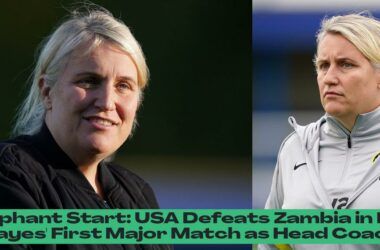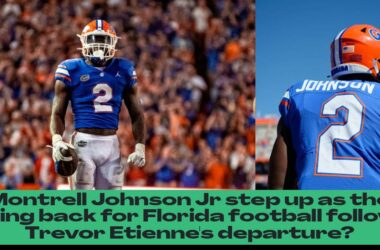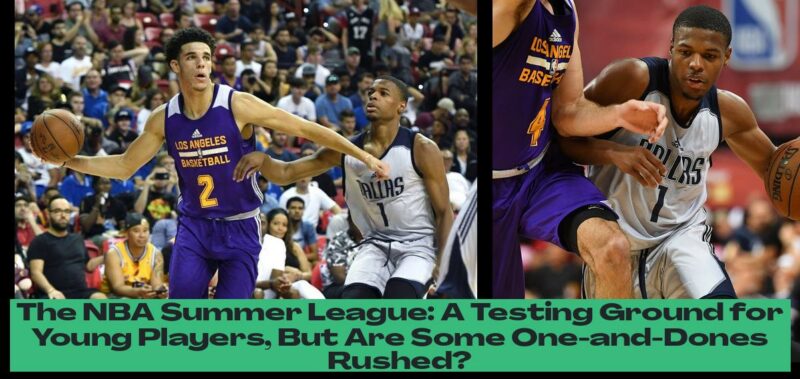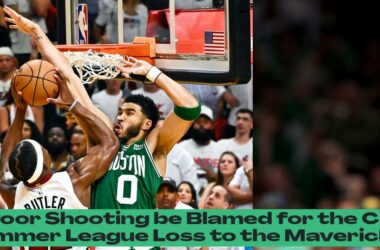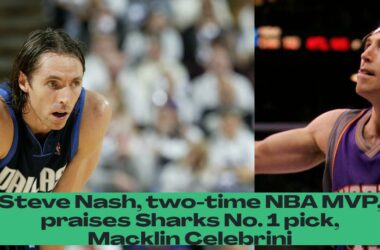The NBA Summer League: A Proving Ground for One-and-Dones, But is it Too Early for Some?
The NBA Summer League is a vibrant spectacle, a whirlwind of athleticism, raw talent, and the promise of future greatness. It’s a proving ground for the next generation of NBA stars, a chance for young prospects to showcase their skills and make their mark on the league. But amidst the excitement and anticipation, a sobering reality emerges: for some players, particularly those who declare for the draft after just one year of college, the Summer League can feel more like a trial by fire than a celebration of their potential.
Jordan Walsh, a 20-year-old wingman drafted by the Boston Celtics in 2022, is a prime example. Walsh, a solid defender with a promising skillset, is still trying to find his footing in the NBA, and his struggles in the Summer League underscore the inherent challenges faced by young players who enter the league before they’ve fully matured.
While Walsh’s story is a familiar one in the NBA, it’s not just him. The Summer League rosters are littered with one-and-dones, each hoping to prove they’re ready for the next level. The issue? Many of these players, lured by the allure of the NBA spotlight and the promise of riches, might be better served by staying in college, honing their skills, and gaining valuable experience.
The success rate of one-and-done players is far from guaranteed, and the pressure to perform in the Summer League can be immense. The stakes are high, and the scrutiny is relentless. Teams are looking for players who can contribute immediately, and for young players who haven’t yet fully developed their game, this can be a daunting task.
The Summer League is a microcosm of a larger trend in the NBA: the growing emphasis on immediate results. Teams are less patient than ever, and players who don’t show rapid progress can find themselves on the outside looking in, their NBA dreams quickly fading.
Is the NBA Becoming Too Impatient with Young Players?
The NBA’s current landscape presents a stark contrast to the days of players like Tim Duncan, who spent four years in college before joining the San Antonio Spurs. While the NBA’s emphasis on athleticism and skill development has undoubtedly led to a higher level of talent, it’s also created a system that favors immediate gratification over long-term development.
This shift in focus has had a significant impact on the development of young players. The pressure to perform at a high level from day one can be overwhelming, and for many, it can actually hinder their growth. The NBA’s relentless pursuit of talent has created a system where players feel the need to rush their development, often with detrimental consequences.
The rise of NIL deals has further complicated the equation. While it’s great that college athletes can now profit from their name, image, and likeness, it has also created an incentive for players to leave college early, even if they’re not fully prepared for the NBA. The allure of lucrative NIL deals can be difficult to resist, even if it means sacrificing valuable development time.
The NBA needs to find a balance between its pursuit of immediate talent and its commitment to player development. This means creating a more supportive environment for young players, one that values patience, mentorship, and the long-term development of their skills.
The Need for Patience and a Shift in Perspective
The NBA’s current trajectory, with its focus on one-and-done players and immediate results, is not sustainable. The league needs to prioritize player development, create a system that supports young players, and foster a culture of patience and mentorship.
This doesn’t mean abandoning the Summer League. It’s still a valuable opportunity for young players to showcase their skills and gain exposure. But it’s important to remember that the Summer League is just one step in a long journey. For many players, especially those who enter the league with limited experience, the path to NBA success is a marathon, not a sprint.
The NBA needs to embrace a more holistic approach to player development, one that recognizes the importance of time, mentorship, and the gradual development of skills. This means investing in player development programs, providing opportunities for players to develop their skills in a structured environment, and fostering a culture of patience and support.
The NBA’s future depends on the development of its young players. It’s time for the league to shift its perspective and prioritize the long-term development of its talent, ensuring that the next generation of NBA stars has the opportunity to reach their full potential.
- Jordan Walsh’s struggles in the NBA Summer League highlight the challenges faced by young players who enter the league after just one year of college.
- Many one-and-done players in the NBA Summer League might benefit from staying in college to further develop their skills and gain experience.
- The pressure to perform immediately in the Summer League can be overwhelming for young players who are still maturing their game.
- The NBA’s current landscape emphasizes immediate results, making it challenging for young players to adjust and succeed quickly.
- Teams are increasingly less patient with young players, expecting rapid progress and contributions right from the start of their careers.

